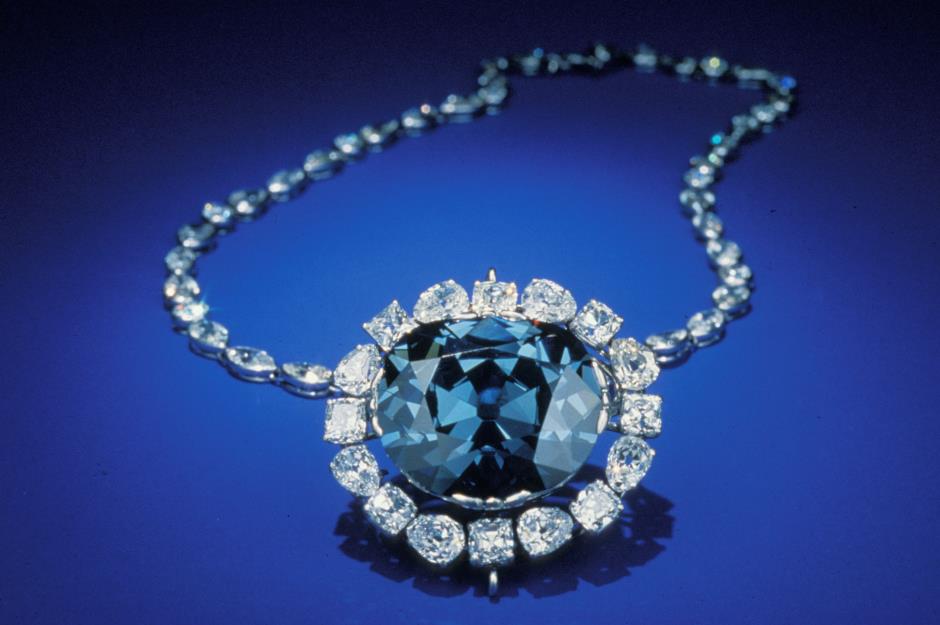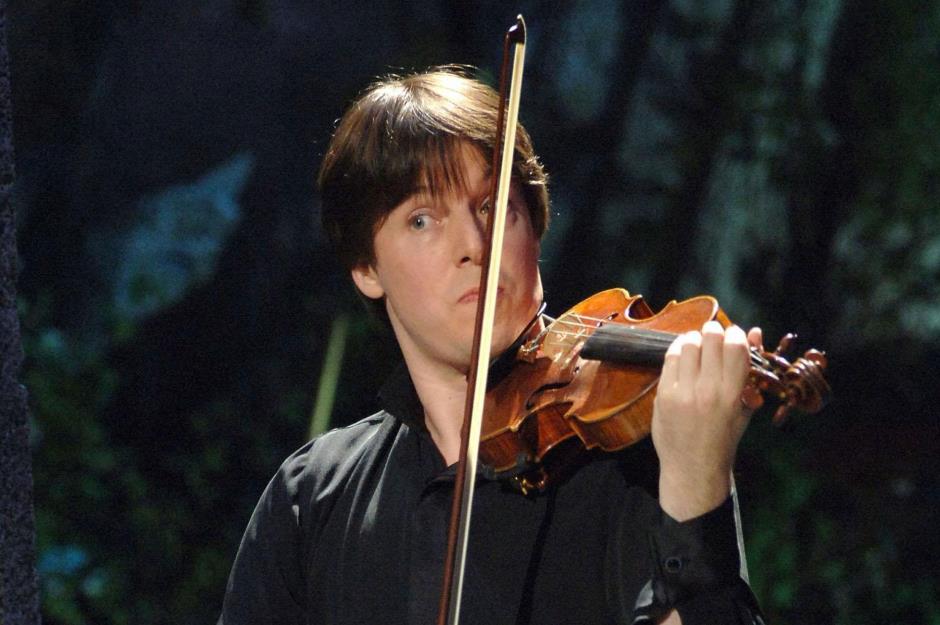20 of the world's most valuable stolen treasures
Priceless pilfered objects
A giant Canadian gold coin worth $4.7 million (£3.6m) was recently snatched from Berlin's Bode Museum in an audacious dawn heist. The 220-pound coin may be worth a fortune, but it isn't the most valuable treasure that has been swiped – by a long shot. From prized jewels to priceless paintings, we reveal 20 of the most expensive stolen items of all time.
Gibson Stradivarius, value: $15 million (£11.6m)
One of the world's most valuable violins, the Gibson Stradivarius, which was fashioned by the great Italian instrument maker in 1713, has been stolen twice: in 1919, when it was swiftly recovered, and in 1936 by Julian Altman, a jobbing musician. Altman confessed to his wife that he'd been behind the theft while on his deathbed in 1985, and she turned over the violin to the authorities in 1988. Now worth $15 million (£11.6m), the Strad is currently owned by top violinist Joshua Bell.
Caravaggio's Nativity with St. Francis and St. Lawrence, value: $20 million (£15.5m)
This exquisite painting by Italian Baroque master Caravaggio was created in 1609 and hung in the Oratory of San Lorenzo in Palermo, Italy until October 1969, when it was stolen, along with other works of art. Featuring on the FBI's top ten list of art crimes, the theft is thought to have been carried out by members of the Sicilian Mafia. The painting, which has been valued at $20 million (£15.5m), has never been recovered.
Picasso's Le Pigeon aux Petits-Pois, value: $28 million (£21.7m)
This 1911 artwork by Pablo Picasso was one of five paintings stolen from the Musée d'Art Moderne de la Ville de Paris in May 2010. Altogether the five paintings are worth $123 million (£95m), but the Picasso remains the most valuable. Though the culprit was arrested in 2011, the missing paintings were never recovered – panicking, the thief threw the works of art in a trash container and they are thought to have been destroyed.
Patiala Necklace, value: $30 million (£23m)
Cartier crafted this opulent necklace in 1928 for Bhupinder Singh of Patiala, the then Maharaja of the state of Patiala in India. Dripping with 2,930 diamonds, the necklace contained the 428-carat De Beers diamond, the seventh largest in the world. The blingy piece of jewelry went missing from the royal treasury of Patiala in 1948, and while parts of the necklace have been found, including the De Beers diamond, the Burmese rubies and scores of diamonds remain missing.
Third Imperial Fabergé Egg, value: $33 million (£25.6m)
The House of Fabergé crafted a total of 50 bejeweled eggs for the Russian royal family from 1885 up until the eve of the October Revolution in 1917. Amid the chaos of revolution, eight eggs were confiscated by Bolshevik revolutionaries and went astray. The Third Imperial Egg is the only missing Fabergé egg that has been recovered. It surfaced in 2012 at a scrap metal dealership in the American Midwest of all places and went on to sell for an estimated $33 million (£25.6m).
Rembrandt's Self-portrait with Beret and Gathered Shirt, value: $37 million (£28.7m)
Another important work of art that was thankfully recovered, this $37 million (£28.7m) self-portrait by the Dutch master was taken from the Nationalmuseum in Stockholm, along with Renoir's A Young Parisienne and Conversation, during an armed raid in December 2000. The Rembrandt self-portrait was discovered in Copenhagen in 2005, while the Renoir painting cropped up in Los Angeles a year later.
Van Gogh's Poppy Flowers, value: $55 million (£42.6m)
Valued at up to $55 million (£42.6m), this charming depiction of yellow and red poppies, which was painted by Vincent Van Gogh in 1887, has been stolen twice. In 1977, it was snatched from Cairo's Mohamed Mahmoud Khalil Museum but recovered 10 years later in Kuwait. The painting was stolen a second time in August 2010 and is yet to be located. Egyptian billionaire Naguib Sawiris has offered a reward of $175,000 (£136k) for information leading to the artwork's recovery.
Cellini Salt Cellar, value: $65 million (£50.4m)
This ornate gold salt cellar by Italian sculptor Benvenutto Cellini, which was completed in 1543 for King Francis I of France, is considered 'the Mona Lisa of sculptures', hence its sky-high value. It was stolen in May 2003 from the Kunsthistorisches Museum in Vienna. Fortunately, the salt cellar was found in January 2006 buried in a lead box in an isolated Austrian forest, after thief Robert Mang confessed to the crime.
Da Vinci's Madonna of the Yarnwinder (the Buccleuch Madonna) value: $65 million (£50.4m)
One of two versions of Da Vinci's Madonna of the Yarnwinder, the Buccleuch Madonna was stolen in 2003 from Drumlanrig Castle in Scotland, where it had hung for 236 years. Two thieves posing as tourists brazenly purloined the artwork in broad daylight. The Buccleuch Madonna turned up in 2007 when a lawyer from Lancashire, England attempted to act as a go-between to sell the painting, and it was promptly returned to its rightful owner, the 10th Duke of Buccleuch.
Cézanne's The Boy in the Red Vest, value: $91 million (£70.5m)
Regarded as one of Paul Cézanne's finest works, the Boy in the Red Vest, which was painted around 1890, was stolen in February 2008 from the Foundation E.G. Bührle in Zurich, Switzerland by three armed gunmen. The thieves made off with a Degas, Monet and Van Gogh to boot. As luck would have it, the Boy in the Red Vest was recovered in Serbia in 2012, and the other missing paintings have since been tracked down.
Rembrandt's The Storm on the Sea of Galilee, value: $100 million (£77.5m) – priceless
This Rembrandt masterpiece from 1633, the Dutch artist's only seascape, was stolen in March 1990 from the Isabella Stewart Gardner Museum in Boston along with 12 other super-valuable artworks. The paintings were valued at $500 million (£387m) at the time, making it the most notorious art heist in history and the world's largest-value theft of private property. Sadly, none of the artworks have ever been recovered and the culprits are still at large.
Raphael's Portrait of a Young Man, value: $100 million (£77.5m) – priceless
The Nazis plundered billions of dollars worth of art and this 1513-14 artwork by the supreme painter of the High Renaissance was among the treasures looted. Widely regarded as the most important painting missing since World War II, the Portrait of a Young Man was taken from the Czartoryski Museum in Kraków, Poland in 1939. It was appropriated by Nazi official Hans Frank for his villa in Neuhaus, Germany but its whereabouts have been unknown since 1945.
Van Eyck's The Just Judges Panel, value: priceless
Dating from 1430-32, the lower left panel of Van Eyck's priceless Just Judges Altarpiece was stolen in April 1934 from the Saint Bavo Cathedral in Ghent, Belgium. A ransom demand for one million Belgian francs was received but the authorities refused to cough up the cash. A possible culprit, Arsène Goedertier, confessed to the theft on his deathbed in December 1934 but refused to reveal where he had hidden the painting. It remains missing, presumably destroyed.
Munch's The Scream, value: $120 million+ (£92.8m+)
Edvard Munch produced four versions of his famous masterpiece, but the most notable is the painted version from 1893 that belongs to the National Gallery in Oslo, Norway. It was stolen in February 1994. After their ransom demand was rejected, the thieves were captured by Norwegian police in a sting operation and the painting was recovered two months after it was swiped. The less valuable pastel version of the Scream that hangs in the Munch Museum in Oslo has also been stolen once and recovered.
Klimt's Portrait of Adele Bloch-Bauer I, value: $150 million (£116m)
This celebrated 1907 painting by Gustav Klimt was stolen by the Nazis in 1941 from Jewish banker and sugar producer Ferdinand Bloch-Bauer, whose wife is depicted in the painting. Bloch-Bauer fled to Zurich, where he died impoverished in 1945. The portrait ended up in an Austrian gallery and was eventually claimed by Bloch-Bauer's niece in 2006. It was sold later that year to Estée Lauder heir Ronald Lauder for $87.9 million (£68m) and is estimated to be worth $150 million (£116m) today.
Vermeer's The Concert, value: $200 million (£154.8m) – priceless
The most valuable unrecovered stolen painting ever, Johannes Vermeer's The Concert, which dates from 1664, was snatched along with Rembrandt's The Storm on the Sea of Galilee and 10 other works of art during the infamous Isabella Stewart Gardner Museum theft in March 1990. The FBI believes the painting was offered for sale in Philadelphia in the early 2000s by an organized crime syndicate but still hasn't been able to locate it.
Hope Diamond, value: $250 million (£200m)
The renowned blue Hope Diamond is said to carry a curse, bringing misfortune to anyone who owns or wears it. Nevertheless, this hasn't put off buyers over the years – or thieves. Originally known as the Tavernier Blue, the gem was stolen from the French Crown in 1791, re-cut and rechristened the Hope Diamond. It now belongs to the Smithsonian Institution and is said to be insured for $250 million (£200m).
Amber Room, value: $303 million (£234.6m)
Regarded as the 'Eighth Wonder of the World', the Amber Room was created for Frederick, King in Prussia in the early 18th century. The star attraction of the Catherine Palace near Saint Petersburg in Russia, the gold and amber-laden chamber was stolen by the Nazis in 1941 and moved to Königsberg Castle in Königsberg, East Prussia, now Kaliningrad, Russia. The room is thought to have been destroyed along with the castle in 1945, but some experts believe it was saved and may be hidden somewhere.
Empire State Building, value: $1.89 billion (£1.46bn)
In what has been described as 'one of the biggest heists in American history', the New York Daily News stole the iconic Big Apple Skyscraper in December 2008, to highlight a loophole in the law. Journalists at the newspaper were able to get the city to transfer the deeds of the $1.89 billion (£1.46bn) tower to a fraudulent party by using a fake notary stamp. Needless to say, the New York Daily News returned the property to its owner and the deed recording system has since been tightened up.
Da Vinci's Mona Lisa, value: $2 billion (£1.55bn) – priceless
The most famous work of art in the world was stolen in 1911 by Vincenzo Peruggia, an employee of the Louvre, where the painting resides. The daring thief hid in a broom cupboard and snatched the painting when the museum was shut. Missing for two years, the Mona Lisa was recovered in 1913 and returned to the Louvre in 1914. Worth at least $2 billion (£1.55m) in today's money, it's hands down the most expensive individual object ever stolen.

